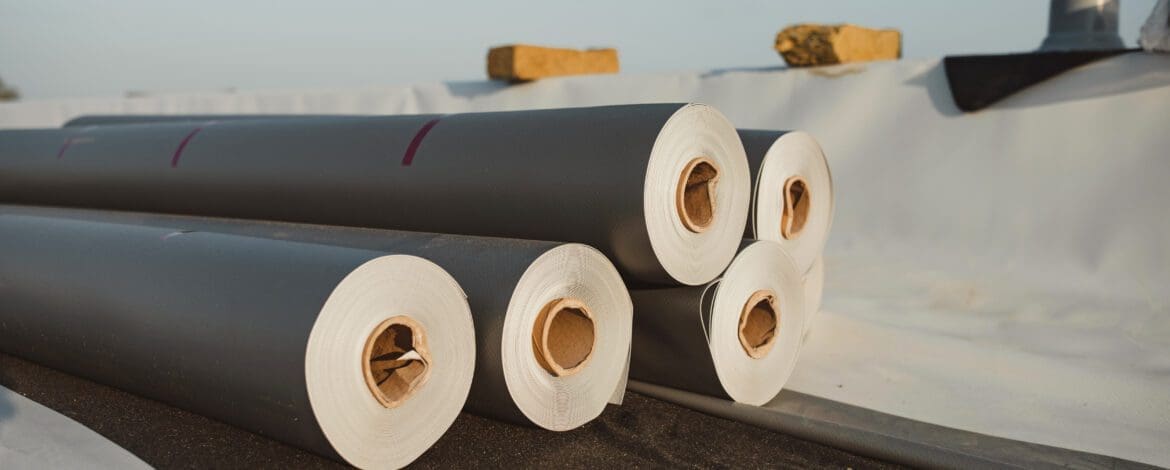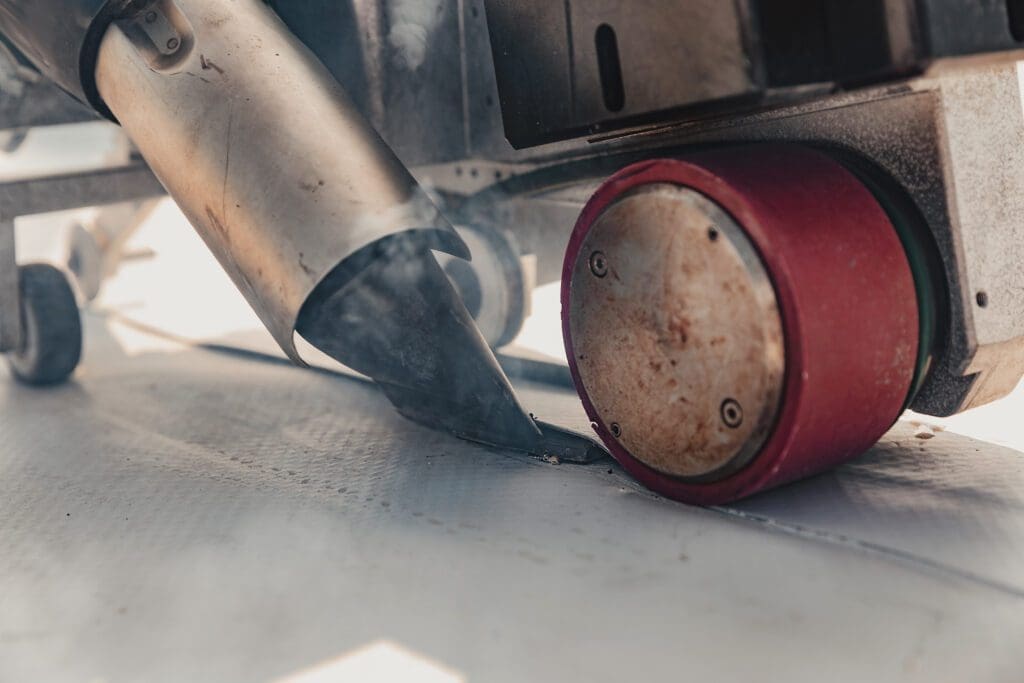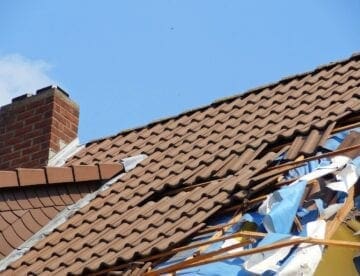Flat roofs have been one of the most popular choices for “modern” and “trendy” home designs for the last few decades. It’s easy to see why. In contrast to the trusty, old-school 4:12 roof pitch on a gable or a hip roof, a flat roof looks chic and modern and daring. A flat roof is bold and stylish!
Flat roofs are also flexible and utilitarian, and are frequently used on home additions like TV rooms and garages. They’re simple to integrate with an existing structure. Either way, those flat roofs will often use a membrane, and EPDM and TPO are two of the most popular membranes. That’s due mostly to cost, but it’s partly due to flexibility. But which is better? Here in this article we’ll look at flat roof and EPDM vs TPO options.
What Is A Membrane Roof?
A membrane roof is a waterproof synthetic material that comes in a rolled form. It’s designed to withstand the elements—blazing sun, ultraviolet radiation, rain, snow, heat, and cold—and to keep the elements out of your home. In contrast to the ubiquitous asphalt shingles that most homes have on their roofs, a membrane roof is usually used on a “flat” or low-slope roof. It can be used on a roof with more of a slope, or pitch, but typically isn’t, as homeowners choose more attractive options for those roofs. Asphalt shingles can’t be used on flat or low-slope roofs, which is one of the reasons why membrane roofs are commonly used.
To install a membrane roof, your contractor unrolls it onto your roof deck and attaches it with an adhesive or with fasteners. Both ways can work well. Most residential roofs will use adhesive, but some contractors prefer using fasteners.
Why Choose EPDM For Your Roof?
EPDM is a petroleum-based product and is an acronym for ethylene propylene diene monomer. It has been the “budget” or “Chevrolet” membrane choice for 40 or 50 years or so. In that same timeframe, PVC was the “Cadillac” or the more-expensive option. EPDM is available in very large widths, which makes it attractive for commercial jobs. Those large dimensions enable the contractor to minimize the number of seams, which are the weak point for EPDM. With EPDM, your contractor must use adhesive on the seams, and that’s where the failures tend to occur.
With TPO and PVC, in contrast, your contractor uses heat welding, which is more durable over time. Heat welding melts the two sheets of material together and they stay that way. They are stuck permanently. Adhesive, in contrast, may need some maintenance periodically, so you will need to do a roof inspection yearly. Within a few years your EPDM roof may need some touchups or resealing to the seams, as well. It’s not a huge deal, but if you don’t do these basic tasks your roof will not last to its maximum lifespan, which should be 15–20 years.
The Pros of EPDM Roofing
- EPDM is budget friendly and is often the lowest-cost membrane option.
- Installers skilled at installing EPDM are common.
- EPDM can be durable and long lasting, with a lifespan of up to 20 years, when it’s installed properly.
- Adding 1-3″ of rigid insulation over the roof decking will provide you with an energy-efficient roof, especially if you choose the white finish for the EPDM.
The Cons of EPDM Roofing
- An EPDM roof may not last 10 years if you don’t maintain the seams.
- The standard dark-gray finish will be hotter than light-colored TPO and PVC, which may cost you more for your air conditioner usage.
Cost For Your EPDM Roof
You’ll end up paying from $550–$650 per square for your new EPDM roof. A square is 100 square feet of roof surface, and is the typical way the roofing industry measures jobs. Tearoff for the old roof will cost you $1-4 per square foot, or $100–$400 per square . Rigid polyiso insulation will be in the range of $1.50-$3.50 per square foot, or $150–$$350 per square, depending on the thickness you choose.
For all that, you’re looking at a 20-year roof, more or less. That’s if you maintain it properly, though, which means a minimum of a yearly inspection and resealing the seams as needed. It’s also a good idea to take a look at your roof after severe storms, as those tend to reveal any weak points up there.
Why Choose TPO For Your Roof?
TPO (thermoplastic polyolefin) is another type of membrane roof. It’s a single layer material that comes in a light gray to white color. That makes it reflective and energy efficient, which is helpful for your AC usage. As we mentioned earlier, TPO uses heat welding for the seams. Your contractor has a special machine that rolls down the seams. It precisely applies the right amount of hot air to the two sheets of TPO material, causing them to melt together permanently. These welds do not require maintenance.
The membrane itself can be attached to the roof deck with fasteners or with adhesive over the entire roof deck. As with EPDM, adding a layer of rigid insulation will be an upfront cost but will save you money over time.
The Pros of TPO Roofing
- Resists algae and mold growth.
- Not affected by ultraviolet (UV) radiation.
- Heat-welded seams are strong and maintenance free.
- 20+ year lifespan from top manufacturers.
- Light color reflects the sun’s heat better than most EPDM membranes.
The Cons of TPO Roofing
- Shorter-term track record compared to EPDM and PVC.
- Contractor expertise required for high-quality, heat-welded seams.
- Some cheap products may last only 10 years or so.
TPO Roofing Cost
A high-quality TPO roof will cost you $600–$700 per square, so just slightly more on average than an EPDM roof. Other costs from the same contractor should be identical between TPO and EPDM, such as tearoff at $100-$400 per square, and rigid polyiso insulation at $150-$350 per square.
Our business has changed to mostly TPO for membrane roofing, as it seems to be a better product than EPDM. It’s also more cost effective than PVC. Some roofers criticize TPO but they seem to be working with outdated information. Top manufacturers like GAF are producing very high-quality TPO with excellent warranties and we prefer heat welding seams over adhesive. It just endures better.
We’re Here When You Need Us
If you’d like to talk about your flat roof EPDM TPO options, and you’re interested in any type of flat roof option, give us a call at 813-373-9088. Our team has more than 40 years of experience in roofing. You can also use this form and ask us, “What’s the cost for a flat roof for my home?” and we will contact you.



